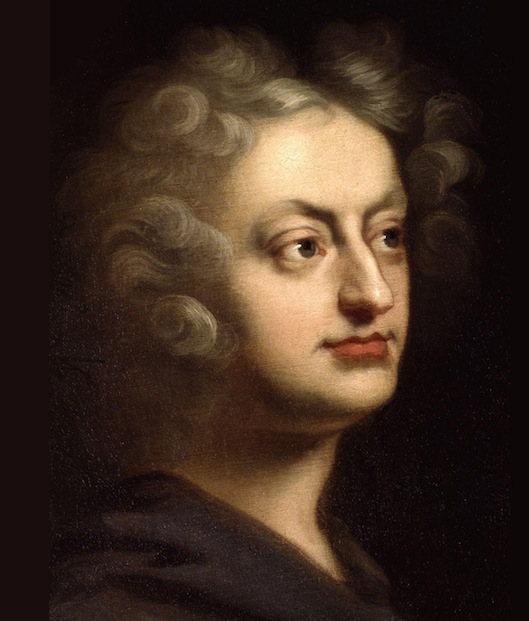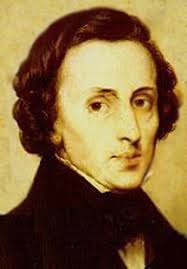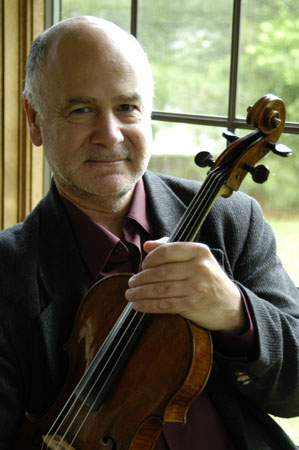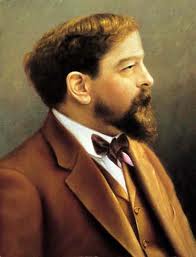Welcome to our free classical music site

Do you write about classical music? Are you a blogger? Want to team up with Classical Connect? Send us a message, let's talk!

Do you write about classical music? Are you a blogger? Want to team up with Classical Connect? Send us a message, let's talk!
September 14, 2015. Recent birthdays and uploads. From one of the recent uploads, here’s Robert Schumann’s Kinderszenen, op. 15 in a sensitive and intelligent performance by Tanya Gabrielian, live from the Dame Myra Hess concert in June of 2015. Born in the United States in 1983, Ms. Gabrielian began playing the piano at the age of three and studied in the Preparatory Division of the San Francisco Conservatory of Music. At the age of sixteen, she was admitted to Harvard University as a National Merit Scholar to study biomedical engineering. Instead, she chose a career in music, and in 2000 moved to London, where she received a Master’s degrees from the Royal Academy of Music. Upon graduation, she also received “DipRAM,” the highest performing award of the Royal Academy of Music. In 2009, Ms. Gabrielian moved to New York to enter the Juilliard School’s Artist Diploma program. Tanya Gabrielian has performed across North America, Europe, and Asia, in venues including Carnegie Hall and Alice Tully Hall in New York, Queen Elizabeth Hall and Wigmore Hall in London. She has played with the Los Angeles Philharmonic, the New London Sinfonia, the Royal Scottish National Orchestra, and other orchestras. Ms. Gabrielian is also active in the National Alliance on Mental Illness, in programs featuring composers with mental illnesses.
 Last week we mentioned Henry Purcell, probably the greatest English-born composer of all time, who died tragically young at the zenith of his career, aged 36. Purcell was born on September 10th, 1659. Just to situate him historically: Corelli was born in 1653 and Alessandro Scarlatti – in 1660. Purcell’s family was musical: both his father and uncle, an important figure in Henry’s life, were singers, and his younger brother Daniel, a composer (he finished Purcell’s opera Indian Queen after Henry’s untimely death). The family lived next to Westminster Abbey, a slum during that time. As a boy, Henry was a chorister in the Royal Chapel. He’s said to have started composing at the age of nine. He studied with two important composers, John Blow and Matthew Locke. Upon Locke’s death in 1677 Purcell became the composer for the King’s violins, the so-called Four and Twenty Violins of Charles II, modeled after the famous 24 Violins of the French court. Two years later, upon the resignation of John Blow, he became the organist at the Westminster Abbey. Later he was appointed organist of the Chapel Royal. During that period he was writing mostly sacred music but in 1688 he composed the opera Dido and Aeneas (before that Purcell had composed music for several plays, but Dido was a real sung opera). Dido, while not the first one, is clearly the finest English baroque opera. Here’s the aria “When I am laid in earth” from Dido sung by Jessye Norman. Purcell continued to write incidental music to stage plays, songs and odes for the court. In 1694 he wrote Te Deum and Jubilate Deo. One of his last compositions (and the last court ode) was Who can from joy refrain, a brief "Birthday ode for the Duke of Gloucester" (here). The soprano Julie Hassler is accompanied by the ensemble La Rêveuse.
Last week we mentioned Henry Purcell, probably the greatest English-born composer of all time, who died tragically young at the zenith of his career, aged 36. Purcell was born on September 10th, 1659. Just to situate him historically: Corelli was born in 1653 and Alessandro Scarlatti – in 1660. Purcell’s family was musical: both his father and uncle, an important figure in Henry’s life, were singers, and his younger brother Daniel, a composer (he finished Purcell’s opera Indian Queen after Henry’s untimely death). The family lived next to Westminster Abbey, a slum during that time. As a boy, Henry was a chorister in the Royal Chapel. He’s said to have started composing at the age of nine. He studied with two important composers, John Blow and Matthew Locke. Upon Locke’s death in 1677 Purcell became the composer for the King’s violins, the so-called Four and Twenty Violins of Charles II, modeled after the famous 24 Violins of the French court. Two years later, upon the resignation of John Blow, he became the organist at the Westminster Abbey. Later he was appointed organist of the Chapel Royal. During that period he was writing mostly sacred music but in 1688 he composed the opera Dido and Aeneas (before that Purcell had composed music for several plays, but Dido was a real sung opera). Dido, while not the first one, is clearly the finest English baroque opera. Here’s the aria “When I am laid in earth” from Dido sung by Jessye Norman. Purcell continued to write incidental music to stage plays, songs and odes for the court. In 1694 he wrote Te Deum and Jubilate Deo. One of his last compositions (and the last court ode) was Who can from joy refrain, a brief "Birthday ode for the Duke of Gloucester" (here). The soprano Julie Hassler is accompanied by the ensemble La Rêveuse.
PermalinkSeptember 10, 2015. Announcement from Classical Connect. Lately you may have noticed that Adobe Flash has fallen out of favor with many browsers. Messages warning about security concerns or even outright bans prevent Flash-based systems from functioning properly. To make matters worse, Apple has had issues with Flash for a long time and has not supported it on its devices. The original Classical Connect Player was written using Flash: with so many built-in functions, we had no viable alternatives at the time. Now with other options available, we’ve decided to rewrite the Player. On September 9th, 2015 we switched to the new Player. If you experience problems accessing the site or using the Player on this day or later, please reload the site or do a “hard reload”: ctrl-F5.
The good news is that now Classical Connect will play on practically all available devices, from Windows-based to Android to Apple, whether desktops, laptops, tablets or mobile phones. So if you had tried the service and were disappointed that it didn’t work, please try again: you should now be able to access any of the approximately 7,000 recordings in our library on any device.
If you have any problems or concerns, please let us know. Just send us an email to cc_contact@classicalconnect.com and we’ll get back to you.
In the mean time, please enjoy the great music and the wonderful musicians.
The Classical Connect team
September 7, 2015. Chopin’s Nocturnes, part II. On this holiday weekend we’ll skip several important anniversaries (Antonin Dvořák; one of our all-time favorites Henry Purcell; William Boyce, another wonderful English composer; and Arvo Pärt – we’ll write about them at another time) and turn to the nocturnes by Frédéric Chopin. This is the second part of an article, which we started on July 13th. It is a testament to the changing musical tastes that we’ll have to compliment the performances by the young pianists from our library (Krystian Tkaczewski and Gabriel Escudero) with those of the masters (Pollini, Rubinstein, Richter, Barenboim, and Horowitz), borrowed from YouTube. Not that long ago Chopin’s nocturnes were among the most often played pieces in all of the piano repertory. Not that anybody today doubts that these are works of genius – they’re just not performed as often. In some sense it’s even better, as they sound fresher that way. ♫
we started on July 13th. It is a testament to the changing musical tastes that we’ll have to compliment the performances by the young pianists from our library (Krystian Tkaczewski and Gabriel Escudero) with those of the masters (Pollini, Rubinstein, Richter, Barenboim, and Horowitz), borrowed from YouTube. Not that long ago Chopin’s nocturnes were among the most often played pieces in all of the piano repertory. Not that anybody today doubts that these are works of genius – they’re just not performed as often. In some sense it’s even better, as they sound fresher that way. ♫
2 Nocturnes, op. 37
The two nocturnes published as op. 37 form a marvelous pair of contrasting major/minor key pieces. Published in 1840, they were also composed around that time. The latter of the two, that in G major, with its barcarolle rhythms, is believed to have been composed the previous year when Chopin accompanied George Sand to the island of Majorca. At one time, these two works were highly praised. Robert Schumann considered them the finest nocturnes Chopin composed describing them as “of that nobler kind under which poetic ideality gleams more transparently (than the earlier Nocturnes).” However, since the twentieth century, this praise has somewhat waned.
The first of the op. 37 nocturnes is in G minor (here). Its lugubrious melody is modestly ornamented and unfolds expressively over a chordal accompaniment in steady quarter notes. It is immediately restated, with some further ornamentation, but greatly intensified as the dynamic is raised from piano to forte, and even reaches fortissimo. Yet, Chopin reigns in the melody’s emotional outpouring with a softer dynamic at the start of its second strain, leaving it to carry on in hushed torment until its conclusion. From a closing cadence in the tonic key, Chopin modulates with ease into the key of E-flat major for the consoling middle portion. This entire episode takes on the character of a simple, pious choral, which some commentators interpret as an expression of Chopin’s faith in religion. With the exception of a few grace notes, the quarter note rhythm is undisturbed, carrying the music along with unshakeable surety. Indeed, there is an effortless serenity here in Chopin’s music. During its last measures, the chorale is broken up by pauses, and subtle changes in harmony lead to reestablishment of the key of G minor. The opening melody is then reprised and is virtually unchanged, albeit shortened, and its final measures are altered to bring about an effective close on the tonic major chord. (Continue reading here).Permalink
August 27, 2015. Bruckner, Cage and many more. Several great – or at least interesting – composers were born this week: Johann Pachelbel, Pietro Locatelli, Anton Bruckner, Darius Milhaud, Giacomo Meyerbeer, Amy Beach and John Cage. Anton Bruckner, who was born on September 4th, 1824, clearly belongs to the former category, and even though we’ve wrotten about him extensively before, we cannot neglect his anniversary. This time we’ll present his Symphony no. 4 in its entirety (when we wrote about Bruckner three years ago, we played just the third movement, Scherzo). Bruckner created many versions of this symphony: he wrote the first version in 1874, then in 1878, after completing the Fifth symphony, he returned to the Fourth, revised the first two movements and completely rewrote the finale. He continued tinkering with it for several more years, and then significantly revised it again in 1887. One year later he made more changes – altogether there are seven versions, of which three are considered “principal.” We’ll hear the second of these. Claudio Abbado leads the Lucerne Festival Orchestra.
And now as a respite from Cages’ musical experiments, something much more conventional: music by Pietro Locatelli, who was born on September 3rd of 1695 in Bergamo. An Italian Baroque composer and violinist, he wrote a number of very pleasing, if not necessarily revolutionary, compositions. Here’s one of them, his Violin Concerto in C minor op. 3. Luca Fanfoni is the soloist with the Reale Concerto.Permalink
August 24, 2015. A concert at the Steans. The 2015 season at the Ravinia’s Steans Music Institute is over, and we’ve uploaded some of the recordings made at their concerts. Every year the Steans, which is Ravinia’s summer conservatory, brings to this Chicago suburb a group of talented young musicians. They study with some of the most renowned teachers, and also perform: the Steans concerts are the highlight of the season. The students play solo recitals and make music together, in ad hoc trios, quartets, and even octets – some of these temporary ensembles achieve very high level of musicianship (it goes without saying that technically all of them play at a very high level). And that’s how the first concert of the 2015 season was programmed: Leonardo Hilsdorf, a young Brazilian pianist, played Domenico Scarlatti’s Sonata in F Minor, K. 466 and five string players performed Mozart’s String quintet no. 4. But the most interesting and in a way quite unique part of the program was the set of Twelve Caprices for viola solo by Atar Arad. Mr. Arad, who is 70, is a world-renowned viola player; he taught at the Steans for a number of years. He was born in Tel-Aviv and started out as a violinist before switching to the viola in 1971. As a youngster he won several international competitions and made a number of highly praised recordings. In 1980 he moved to the US and joined the Cleveland Quartet. He’s also collaborated with the leading musicians of our time, among them the pianists Eugene Istomin and Emanuel Ax, violist Jaime Laredo and the cellists Yo-Yo Ma and Mstislav Rostropovich. He started composing rather late, publishing his first work in 1992 (Solo Sonata for Viola). His Twelve Caprices for viola solo were composed in 2003. During the first Steans concert, several violists took turns playing all twelve. Mr. Arad played one of them. Here’s the First caprice, performed by the Russian violist Georgy Kovalev. The Third Caprice is played by Mr. Arad, and Caprice no. 11 – by Dana Kelley (here).
They study with some of the most renowned teachers, and also perform: the Steans concerts are the highlight of the season. The students play solo recitals and make music together, in ad hoc trios, quartets, and even octets – some of these temporary ensembles achieve very high level of musicianship (it goes without saying that technically all of them play at a very high level). And that’s how the first concert of the 2015 season was programmed: Leonardo Hilsdorf, a young Brazilian pianist, played Domenico Scarlatti’s Sonata in F Minor, K. 466 and five string players performed Mozart’s String quintet no. 4. But the most interesting and in a way quite unique part of the program was the set of Twelve Caprices for viola solo by Atar Arad. Mr. Arad, who is 70, is a world-renowned viola player; he taught at the Steans for a number of years. He was born in Tel-Aviv and started out as a violinist before switching to the viola in 1971. As a youngster he won several international competitions and made a number of highly praised recordings. In 1980 he moved to the US and joined the Cleveland Quartet. He’s also collaborated with the leading musicians of our time, among them the pianists Eugene Istomin and Emanuel Ax, violist Jaime Laredo and the cellists Yo-Yo Ma and Mstislav Rostropovich. He started composing rather late, publishing his first work in 1992 (Solo Sonata for Viola). His Twelve Caprices for viola solo were composed in 2003. During the first Steans concert, several violists took turns playing all twelve. Mr. Arad played one of them. Here’s the First caprice, performed by the Russian violist Georgy Kovalev. The Third Caprice is played by Mr. Arad, and Caprice no. 11 – by Dana Kelley (here).
For those who would rather listen to something more traditional, here’s the above-mentioned Sonata by Domenico Scaralli, and hear – the Mozart.Permalink
August 17, 2015. Claude Debussy. Several composers were born this week, among them Antonio Salieri and Georges Enesco, but of course all of them are overshadowed by Claude Debussy. Before we turn to Debussy, though, we want to mention Nicola Porpora. A Baroque opera composer and teacher of the famous castrato Farinelli and also of Franz Joseph Haydn, Porpora was born on this day in 1686. He is almost forgotten these days, not entirely deservedly, as you can judge for yourself by this aria from his opera Polifermo. Philippe Jaroussky is the countertenor. Now back to Debussy.
Claude Debussy was born in Saint-Germain-en-Laye, near Paris, on August 22nd, 1862, the eldest of five children. His father owned a shop selling china and crockery and his mother was a seamstress. In 1867, the family moved to Paris but when the Franco-Prussian war broke out a few years later in 1870, his mother sought refuge with an in-law in Cannes. While there, Debussy began to take piano lessons from a local elderly Italian violinist. He progressed rapidly on the instrument and his talent for music soon became quite evident. Two years later, in 1872, at the age of ten, he was enrolled in the prestigious Paris Conservatoire.
eldest of five children. His father owned a shop selling china and crockery and his mother was a seamstress. In 1867, the family moved to Paris but when the Franco-Prussian war broke out a few years later in 1870, his mother sought refuge with an in-law in Cannes. While there, Debussy began to take piano lessons from a local elderly Italian violinist. He progressed rapidly on the instrument and his talent for music soon became quite evident. Two years later, in 1872, at the age of ten, he was enrolled in the prestigious Paris Conservatoire.
Debussy spent eleven years at the Conservatoire and studied with some of the leading musicians of France. Despite his talent, however, Debussy was headstrong and showed a stubborn preference for the unusual and experimental. His early compositions often drew the ire of his professors and were heavily criticized for his apparent disregard of the Conservatoire’s teaching. Nevertheless, in 1884, Debussy won the Prix de Rome with his composition L’enfant prodigue and the following year he left for the Villa Medici in Rome to continue his studies. According to his letters, Debussy found the artistic and cultural atmosphere of Rome stifling. He eventually composed four pieces, however, the most notable among them being the cantata La demoiselle élue. The work drew sharp criticism from the French Academy who called it “bizarre.” It is, however, the first piece to give a glimpse of Debussy’s emerging mature style.
During 1888-9, Debussy traveled to Bayreuth and was for the first time exposed to Wagner’s operas. Like many other young musicians of the time, he was inspired by Wagner’s overt emotionalism, striking harmonies and handling of musical form. Around this time, he also found a like spirit in Eric Satie, who shared Debussy’s experimental approach to composition. By the 1890s, the infatuation with Wagner’s music had subsided and Debussy mature style began to take a more definite form. This style was greatly influenced by the Symbolist movement in the visual and literary arts, which developed as a revolt against realism and the heroic imagery of Romanticism. Symbolism influenced him more than the music of other composes, although, in addition to Wagner, he found inspiration in the music of Russia, particularly from “The Five.”
In 1894, Prélude à l’après-midi d’un faune, a symphonic poem based on a poem by Stéphane Mallarmé, premiered in Paris. Considered controversial at the time, the piece was later responsible for establishing Debussy as one of the leading composers of the burgeoning Modern era. Later, in 1902, after ten years of work, he produced his only opera, Pelléas et Mélisande. It premiered at the Opéra-Comique in April of that year and was an immediate success. With his fame growing, Debussy was engaged as a conductor throughout Europe mainly performing his own works, including his multi-movement work La Mer.
Debussy died on March 25th, 1918 from cancer amidst German aerial and artillery bombardment of Paris during World War I. Because of the fighting, it was impossible to hold a public funeral for one of France’s leading artistic figures and consequently his funeral procession made its way through abandoned streets as German artillery shells exploded throughout the city. His music went on to inspire some the leading composers of the 20th century, among theme Maurice Ravel, Igor Stravinsky and Olivier Messiaen, as well as musicians in jazz, such as George Gershwin and Duke Ellington.
We have almost 200 recording of Debussy’s work, so browse our library and you’ll find something you like. In the mean time, here are Estampes, performed by the pianist Katsura Tanikawa. Permalink